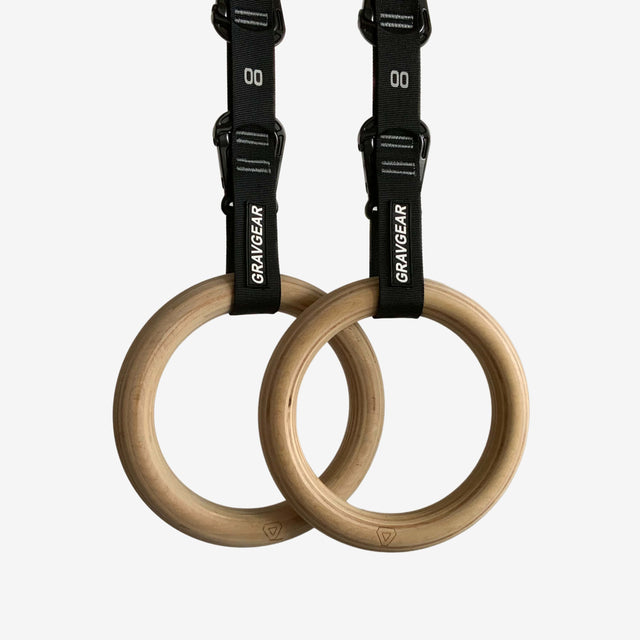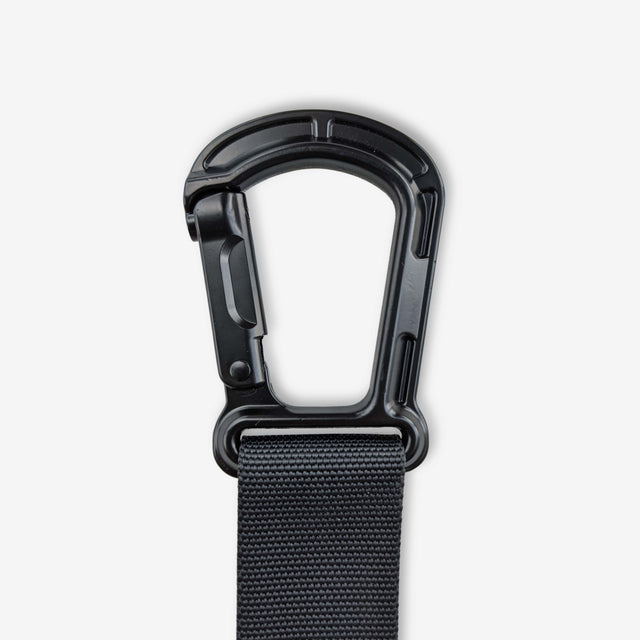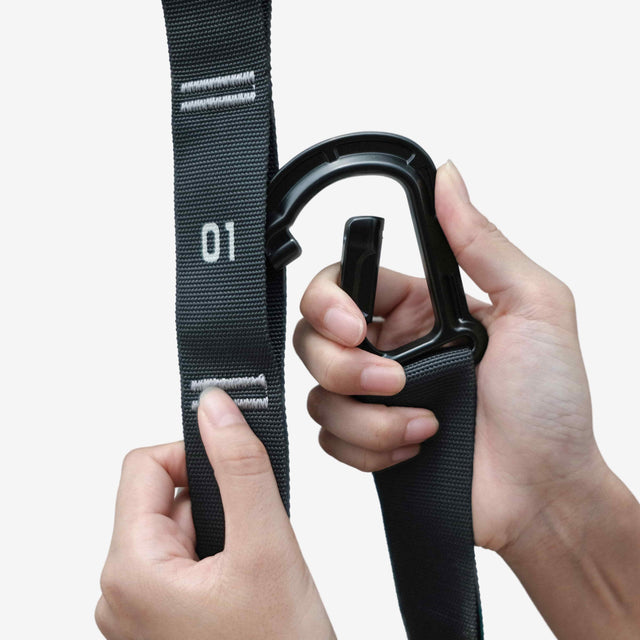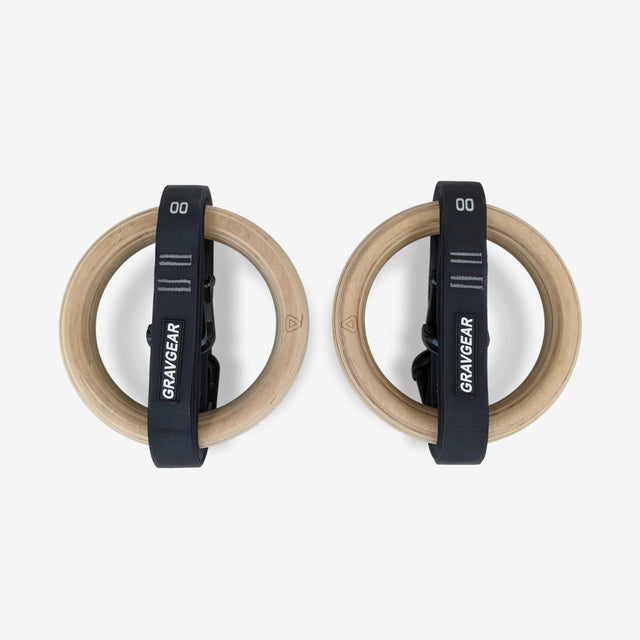9 Quick Tips to Perfect Gymnastic Rings False Grip Form
Mastering the gymnastic rings false grip lets you perform advanced moves like muscle-ups. This grip involves placing your wrist over the top of the rings, enabling smooth transitions. To do it, rest the ring diagonally in your palm, flex your wrist over it, and grip firmly. Practice builds strength & control.
Dive into:
- 🤸♂️ What is the gymnastic rings false grip?
- 💪 Benefits of using the gymnastic rings false grip
- 🧠 Anatomy and mechanics of the gymnastic rings false grip
- 🛠️ How to perform the gymnastic rings false grip
- 🚀 Progressions to master the gymnastic rings false grip
- 🏋️♂️ Tips for improving your gymnastic rings false grip
- 📆 Putting the gymnastic rings false grip into your training
- ⚠️ Gymnastic rings false grip safety considerations
- ❓ FAQs
🤸♂️ What is the gymnastic rings false grip?
🔍 Understanding the false grip
The false grip is a special hand position on gymnastic rings that allows you to perform advanced exercises like muscle-ups without changing your grip mid-movement. Instead of holding the rings with your wrists below them—as you would in a standard pull-up—you flex your wrists over the top of the rings. This means your wrists are above the rings, giving you the leverage to pull yourself up and over.
I was pretty apprehensive about trying the false grip at first. It's a bit tricky and can feel unnatural, but once you get used to it, it opens up a whole new world of exercises. The false grip engages muscles you didn't even know you had, especially those hard-to-reach stabilizers in your shoulders and core. This leads to improved strength, balance, and coordination.
The feel of wood can’t be beat when practising the false grip. Wooden rings are nice and smooth, feeling rock solid in your hands. They provide the confidence you're hoping for because, let's face it, when performing exercises on rings, you need to literally put your life in the hands of the kit, and you don't want it to let you down.
⚖️ False grip vs. standard grip
Let's compare the two grips to understand why the false grip is essential for advanced movements:
- Standard grip:
- Wrist Position: Below the rings
- Suitable For: Basic exercises like pull-ups
- Limitations: Doesn't allow seamless transitions; limits progression to advanced moves
- False grip:
- Wrist Position: Flexed over the top of the rings
- Essential For: Advanced exercises like muscle-ups
- Benefits: Allows smooth transitions without adjusting your grip; engages more muscles
Using the false grip might humble you at first. Even experienced weightlifters find that they’re not as "strong" as they think when they try it. I was super sore after I first tried these, even though I'd been doing the same strength routine on a fixed bar for months! But that's alright—starting with very basic beginner's exercises helps you build up the necessary strength and flexibility.
Not only will you see noticeable improvements in your physique, but it also strengthens your joints and tendons, making you feel much less vulnerable to injury.
So, whether you're training in your garage gym or hanging them from a tree in the bush, the false grip is a fantastic way to elevate your ring workouts. It's a humbling but satisfying experience that leads to better results in the long run, improving your health and longevity.
💪 Benefits of using the gymnastic rings false grip
🚀 Unlock advanced exercises
Mastering the false grip lets you perform advanced movements like muscle-ups with ease. It's one of the most impressive bodyweight exercises you can do because it combines strength, flexibility, and coordination. The false grip is essential here because it allows a seamless transition from pulling to pushing without changing your hand position. If you ever reach this level, you'll definitely feel like your training just paid 500% in dividends.
💪 Increased strength
Using the false grip builds wrist and forearm strength—hard as nails. It challenges muscles you didn't even know you had, especially in your grip and stabilizers. This leads to improved overall strength, making regular pull-ups feel like child's play after this skill. Plus, stronger wrists and forearms reduce the risk of injuries, so you feel much less vulnerable during workouts.
🎯 Enhanced control
The false grip improves stability on the rings, making your workouts buttery smooth. You'll engage your core and shoulder stabilizers more, which helps maintain balance and control during exercises. This means better form and more effective workouts because you're recruiting more muscle groups. It's a humbling but satisfying experience that leads to impressive gains in muscle definition and functional strength.
🏃♂️ Functional fitness
By enhancing overall body control and functional strength, the false grip contributes to better performance in daily activities and other sports. It seems to be the way forward for health and longevity because it not only builds muscle but also strengthens your joints and tendons. This makes you feel much less vulnerable to injury and more confident in your movements. You'll improve your strength, balance, coordination, and mindfulness—damn do they challenge your body.
🧠 Anatomy and mechanics of the gymnastic rings false grip
🔬 Muscles engaged
Understanding which muscles you're working helps in mastering the false grip. Here's what's involved:
- Forearms and wrist flexors: Crucial for grip strength and holding the flexed wrist position.
- Biceps and triceps: Essential for pulling and pushing movements.
- Shoulders and upper back: Including the lats, rhomboids, and traps, for stability and strength.
For beginners, it's better to start with a dead hang on the rings to build up a foundation of gripping strength. I’m still getting used to these rings, but they work muscles that are pretty much inactive in most people, giving you the strength and challenge you need for advanced skills.
⚙️ Wrist and forearm mechanics
The flexed wrist position in the false grip requires significant strength and flexibility. It engages the stabilizer muscles in your wrists and forearms, leading to improved control. I was so paranoid at first, worried I might injure my hand with minimal use. But over time, I realized that the false grip strengthens your joints and tendons, making you feel much less vulnerable to injury.
You might find that you're not as "strong" as you think when you first try the false grip. I was super sore after I first tried these, even though I'd been doing the same strength routine on a fixed bar for months. But that's alright; starting with very basic beginner's exercises helps you build up the necessary strength and flexibility. Doing the basics on them is a whole new challenge. A humbling but satisfying experience.
By focusing on these muscles and mechanics, you'll improve your overall fitness and unlock new capabilities. The false grip really makes you work in ways you never imagined.
🛠️ How to perform the gymnastic rings false grip
📋 Step-by-step guide
Mastering the false grip is essential if you want to unlock advanced ring exercises like the muscle-up. Here's how to get started:
- Hand placement
- Place the meaty part of your palm (just below the base of your thumb) on top of the ring.
- The ring should rest diagonally across your palm, giving you a solid base.
- Wrap your fingers around the ring
- Curl your fingers over the ring firmly.
- Flex your wrists so the heel of your hand is above the ring.
- Engage your grip
- Squeeze the rings as if you're trying to crush them.
- Keep your wrists over the rings throughout the movement.
- Hang and hold
- Begin by hanging from the rings in the false grip position.
- Maintain tension in your entire body—engage your core and keep your shoulders active.
I was pretty apprehensive about trying the false grip at first. But once you get the hang of it, there's something very satisfying about grabbing the rings and feeling rock solid in your hands. It's a new, fun, and outdoor way to move, especially if you hang them from a tree in the park across the road.
⚠️ Common mistakes to avoid
Even seasoned athletes can stumble when learning the false grip. Here are some common pitfalls and how to dodge them:
- Wrist discomfort
- Solution: Gradually build up wrist strength with exercises like wrist curls and extensions.
- Consider using wrist wraps for added support. I almost ripped my shoulders with gymnastic rings when I rushed into it, so take your time.
- Losing grip
- Solution: Chalk up your hands to improve grip.
- Ensure your rings have a good grip surface. If you want more comfort on your soft hands, use grip tape.
- Inconsistent practice
- Solution: Incorporate false grip holds into your regular workouts.
- Consistency is key. Strong is strong!!! Keep at it, and you'll see progress.
Remember, the false grip might humble you at first, but doing the basics on them is a whole new challenge—a humbling but satisfying experience. Stick with it, and you'll unlock strength and control you never imagined.
🚀 Progressions to master the gymnastic rings false grip
Building up to advanced movements takes time and patience. Here are some progressions to help you along the way.
🟢 Beginner exercises
1. False grip hang
- Sets: 3
- Hold time: 40-60 seconds
- Rest: 60 seconds
Start by simply hanging from the rings in the false grip position. This builds wrist and forearm strength. I'm starting with very basic beginner's exercises to improve my flexibility and strength, and I can see and feel results in only two weeks!
2. False grip ring rows
- Sets: 3
- Reps: 8-12
- Rest: 60 seconds
These rows are great for building pulling strength while maintaining the false grip. Push-ups just weren’t cutting it for me anymore, so adding these rows was a game-changer.
🟡 Intermediate drills
1. False grip pull-ups
- Sets: 4
- Reps: 8-12
- Rest: 50 seconds
Now we're getting into the tough stuff. I found dips with rings to be far more difficult than on parallel bars. These pull-ups will challenge your lats, biceps, and grip strength. Regular pull-ups will be like child's play after this.
2. Negative muscle-ups
- Sets: 4
- Reps: 5-8
- Rest: 50 seconds
Lower yourself slowly from the top position of a muscle-up. This builds strength and control. Doing the basics on them is a whole new challenge.
🔴 Advanced movements
1. Strict muscle-ups
- Sets: 5
- Reps: 8-12
- Rest: 40 seconds
This is one of the most impressive bodyweight exercises you can do. It requires tremendous strength in your lats, biceps, grip, and core muscles. If you ever reach this level, you will definitely feel like your training just paid 500% in dividends.
2. L-sit to muscle-up
- Sets: 5
- Reps: 5-8
- Rest: 40 seconds
Combining the L-sit with a muscle-up adds a whole new level of difficulty. This move is not for the faint-hearted but will obliterate bar dips and take your training to the next level.
Adjust length on the fly and modify the difficulty as needed. Remember, it's about progress, not perfection. I moved up in skill from "novice" to "intermediate," and it really required an upgrade in rings. With consistent effort, you'll be super stoked with your progress.
🏋️♂️ Tips for improving your gymnastic rings false grip
Mastering the false grip can be tough, but with the right approach, you'll get there. Here are some tips to help you along the way.
💪 Building grip strength
1. Wrist curls
- What they do: Strengthen your wrist flexors and extensors.
- How to do them: Use a light dumbbell or resistance band. Perform curls with both the palm facing up and down.
- Benefit: Stronger wrists reduce the risk of injury. I got them to help with my stabilizers in my shoulders, and it made a world of difference.
2. Towel pull-ups
- What they do: Enhance grip strength using a towel draped over the bar.
- How to do them: Throw a towel over a pull-up bar, grab each end, and perform pull-ups.
- Benefit: Mimics the instability of rings, improving grip and forearm strength. Regular pull-ups will be like child's play after this skill.
🤸♂️ Wrist mobility exercises
1. Wrist rotations
- What they do: Improve flexibility and reduce discomfort.
- How to do them: Extend your arm in front of you and slowly rotate your wrist in circles.
- Benefit: Increased mobility makes the false grip more comfortable. I didn’t realise how much these pinpoint muscles that I find hard to reach.
2. Prayer stretch
- What they do: Stretch the forearm muscles to increase range of motion.
- How to do them: Place your palms together in front of your chest and lower them to feel a stretch.
- Benefit: Helps prevent injuries and prepares your wrists for the flexed position.
🛠️ Using accessories
1. Grip aids
- What they do: Prevent slipping.
- How to do them: Use gym chalk or grip pads.
- Benefit: Provides a better grip on the rings. If you want more comfort on your soft hands, use grip tape.
2. Wrist wraps
- What they do: Provide additional support during exercises.
- How to do them: Wrap them snugly around your wrists before starting.
- Benefit: Reduces strain and helps you maintain the false grip longer.
Got humbled? That's alright—practice makes perfect. Doing the basics on them is a whole new challenge—a humbling but satisfying experience. Stick with it, and you'll be super stoked with your progress.
📆 Putting the gymnastic rings false grip into your training
Adding the false grip to your workouts can elevate your training to new heights. Here's how to integrate it based on your level.
🟢 Beginner level
Exercise: False grip hang
- Sets: 3
- Hold time: 40-60 seconds
- Rest: 60 seconds
Start by hanging from the rings in the false grip position to build wrist and forearm strength. I'm a complete novice, but I've seen noticeable improvements in just a couple of weeks.
Exercise: False grip ring rows
- Sets: 3
- Reps: 8-12
- Rest: 60 seconds
These rows are less intense than pull-ups but still challenge your grip and upper back. Push-ups just weren’t cutting it for me anymore, so these were a perfect addition.
🟡 Intermediate level
Exercise: False grip pull-ups
- Sets: 4
- Reps: 8-12
- Rest: 50 seconds
These will significantly improve your pulling strength. I found dips with rings to be far more difficult than on parallel bars, but these pull-ups helped bridge the gap.
Exercise: Negative muscle-ups
- Sets: 4
- Reps: 5-8
- Rest: 50 seconds
Focus on controlling the descent from the top position. I moved up in skill from "novice" to "intermediate," and it really required an upgrade in rings.
🔴 Advanced level
Exercise: Strict muscle-ups
- Sets: 5
- Reps: 8-12
- Rest: 40 seconds
This is where the false grip shines. One of the most impressive bodyweight exercises you can do, combining strength, flexibility, and coordination.
Exercise: L-sit to muscle-up
- Sets: 5
- Reps: 5-8
- Rest: 40 seconds
Adds core engagement to the muscle-up. Damn do they challenge your body, but the results are worth it.
🏋️♂️ Push, pull, legs split with false grip
Incorporate false grip exercises into your weekly routine for balanced development:
- Push day: False grip ring dips, push-ups
- Pull day: False grip pull-ups, rows
- Legs day: Include core exercises like hanging knee raises with a false grip
This approach helped me improve my strength, balance, coordination, and mindfulness. Plus, it keeps workouts fresh and exciting.
⚠️ Gymnastic rings false grip safety considerations
Your safety is paramount when training with the false grip. Here's how to keep things safe and effective.
🛡️ Preventing injuries
1. Check equipment regularly
- What to do: Inspect your rings and straps before each use.
- Why: Ensure there are no fraying or cracks. I believe when performing exercises on rings, you need to literally put your life in the hands of the kit and you don’t want it to let you down!
2. Progress gradually
- What to do: Don't rush into advanced exercises.
- Why: Avoid injuries by allowing your muscles and tendons time to adapt. Yeah, I feel like usually people underestimate the difference in time it takes for tendons and ligaments to strengthen compared to muscles.
3. Listen to your body
- What to do: If something feels off, take a step back.
- Why: Pushing through pain can lead to injuries. I almost ripped my shoulders with gymnastic rings when I ignored the signs.
🔥 Proper warm-up and cool-down
1. Wrist and forearm warm-up
- What to do: Perform wrist rotations, stretches, and light exercises.
- Why: Prepare your joints and muscles for the workout.
2. Stretching
- What to do: Incorporate stretches post-workout to aid recovery.
- Why: Helps reduce muscle soreness and improve flexibility.
❓ FAQs
🤔 Common questions answered
What is the gymnastic rings false grip?
The false grip is a way of holding gymnastic rings where you flex your wrists over the top of the rings. This grip lets you smoothly transition between pulling and pushing movements, like muscle-ups, without changing your hand position. It might feel a bit tricky at first, but it's essential for unlocking advanced exercises.
What are the benefits of the gymnastic rings false grip?
Using the false grip unlocks advanced exercises like muscle-ups, builds wrist and forearm strength—hard as nails, and enhances your control on the rings. It challenges your body in ways you never imagined, leading to improved functional strength and stability. Damn do they challenge your body, but the results are well worth it.
How can I improve my gymnastic rings false grip?
Regular practice is key. Incorporate grip strength exercises like wrist curls and towel pull-ups, and don't forget wrist mobility drills like wrist rotations and the prayer stretch. Over time, your grip will get stronger, and the false grip will feel more natural. Got humbled? That's alright—practice makes perfect.
What is the difference between a closed grip and a false grip?
A closed grip, or standard grip, has your wrists below the rings—great for basic exercises like pull-ups. The false grip positions your wrists flexed over the top of the rings, which is essential for advanced movements like muscle-ups because it allows you to pull yourself over the rings without changing your grip.
Can beginners practice the gymnastic rings false grip?
Absolutely! Even if you're a complete novice, you can start by hanging from the rings in the false grip position to build up strength. Beginning with basic exercises helps you get used to the grip and strengthens your wrists and forearms. I was pretty apprehensive at first, but with consistent practice, you'll see progress in no time.











0 Comments
There are no comments for this article. Be the first one to leave a message!